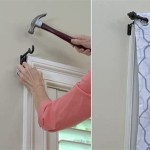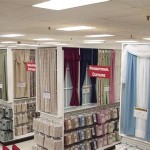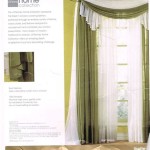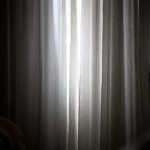Blackout Curtain Solutions for Sliding Glass Doors
Sliding glass doors offer many benefits, including abundant natural light, easy access to outdoor spaces, and enhanced ventilation. However, they also present unique challenges when it comes to light control, privacy, and energy efficiency. Standard window treatments often prove inadequate for covering the large surface area and specific operational requirements of sliding glass doors. Blackout curtains emerge as a compelling solution, effectively addressing these challenges while offering a range of aesthetic and functional advantages.
Blackout curtains are designed to block a significant portion, if not all, of incoming light. This is achieved through the use of tightly woven fabrics, often incorporating multiple layers and a specialized opaque lining. These features effectively minimize light penetration, creating a dark and private environment. The benefits of blackout curtains extend beyond simple light blockage; they also contribute to improved sleep quality, enhanced media viewing experiences, and reduced energy consumption.
When considering blackout curtains for sliding glass doors, several factors must be taken into account to ensure optimal performance and satisfaction. These factors include the curtain material, hanging style, size and coverage, and overall aesthetic compatibility with the existing décor. Careful consideration of these aspects will result in a functional and visually appealing window treatment solution.
Key Benefits of Using Blackout Curtains on Sliding Glass Doors
One of the primary advantages of blackout curtains is their ability to effectively minimize light intrusion. This is particularly beneficial in bedrooms, home theaters, or any space where darkness is desired. The tightly woven fabric and specialized lining prevent sunlight, streetlights, and other external light sources from penetrating the room, promoting a more conducive environment for sleep and relaxation. For individuals sensitive to light, such as shift workers or those with certain medical conditions, blackout curtains can significantly improve their quality of life.
Furthermore, the light-blocking properties of blackout curtains contribute to improved energy efficiency. By blocking sunlight, they reduce heat gain during the summer months, minimizing the need for air conditioning and lowering energy bills. Conversely, in the winter, blackout curtains can help retain heat within the room, reducing reliance on heating systems. This insulation effect helps to maintain a more consistent temperature throughout the year, creating a more comfortable and energy-efficient living space. The savings on energy costs can be substantial over time, making blackout curtains a worthwhile investment.
Blackout curtains also enhance privacy by preventing outsiders from seeing into the home. This is particularly important for sliding glass doors, which often offer a clear view into living spaces. The opaque fabric of blackout curtains effectively blocks the view, providing a sense of security and peace of mind. This feature is especially valuable for individuals living in densely populated areas or those concerned about privacy.
Choosing the Right Blackout Curtain Material
The material of a blackout curtain significantly impacts its light-blocking capabilities, durability, and overall appearance. Several materials are commonly used in the construction of blackout curtains, each with its own unique properties and advantages. Common options include polyester, microfiber, and blends of natural and synthetic fibers. The choice of material should be based on factors such as desired light blockage level, budget, and personal preferences.
Polyester is a popular choice for blackout curtains due to its affordability, durability, and resistance to wrinkles and fading. It is also relatively easy to clean and maintain. However, polyester may not offer the same level of light blockage as some other materials, particularly without a specialized lining. Thicker polyester fabrics or those with multiple layers tend to provide better light control.
Microfiber is another common option, known for its soft texture and excellent light-blocking properties. Microfiber fabrics are often tightly woven, creating a dense barrier that effectively minimizes light penetration. Microfiber blackout curtains are also relatively lightweight and easy to care for. However, they may be more susceptible to static cling than other materials.
Some blackout curtains incorporate blends of natural and synthetic fibers, such as cotton and polyester. These blends offer a balance of benefits, combining the natural feel of cotton with the durability and wrinkle resistance of polyester. The specific properties of the blend will depend on the proportion of each fiber. When selecting a blended material, it is important to consider the weave density and the presence of any specialized lining to ensure adequate light blockage.
In addition to the primary fabric, the lining of a blackout curtain plays a crucial role in its light-blocking performance. Blackout linings are typically made from opaque materials such as rubber or acrylic coatings. These linings are applied to the back of the curtain fabric, creating an additional barrier against light. Curtains with a high-quality blackout lining will provide the most effective light control.
Hanging Styles and Hardware for Sliding Glass Door Curtains
The hanging style and hardware used to install blackout curtains can significantly impact their functionality and aesthetic appeal. Several options are available, each suited to different preferences and architectural styles. Common hanging styles include rod pocket, grommet, tab top, and track systems. The choice of hanging style should be based on factors such as ease of use, desired look, and the weight of the curtains.
Rod pocket curtains are a classic and versatile option, featuring a sewn-in pocket at the top that slides onto a curtain rod. This hanging style is relatively easy to install and creates a gathered, elegant look. However, rod pocket curtains may not slide as smoothly as other options, particularly with heavier fabrics. They are best suited for curtains that are not frequently opened and closed.
Grommet curtains feature metal or plastic rings inserted into the fabric at the top, through which the curtain rod is threaded. This hanging style creates a clean, modern look and allows the curtains to slide smoothly along the rod. Grommet curtains are a good choice for sliding glass doors that are frequently used, as they are easy to open and close. The grommets also add a decorative touch.
Tab top curtains feature fabric loops or tabs sewn onto the top of the curtain, which are then hung from a curtain rod. This hanging style creates a more casual and relaxed look. Tab top curtains are relatively easy to install and can be a good option for lightweight fabrics. However, they may not slide as smoothly as grommet curtains, and the tabs can sometimes sag or droop.
Track systems offer a more sophisticated and functional solution for hanging blackout curtains. These systems consist of a track mounted to the wall or ceiling, with carriers that slide along the track. Curtains are attached to the carriers using hooks or clips. Track systems allow for smooth and effortless operation, even with heavy or bulky curtains. They are particularly well-suited for sliding glass doors, as they can be easily opened and closed without requiring significant effort.
In addition to the hanging style, the choice of curtain rod or track is also important. The rod or track should be sturdy enough to support the weight of the curtains and should be long enough to extend beyond the edges of the sliding glass door. This will ensure that the curtains completely cover the door when closed and that they can be fully opened without obstructing the doorway. Decorative curtain rods can add a touch of style to the room, while more functional rods are often preferred for their durability and ease of use.
For sliding glass doors, it is often beneficial to use a double curtain rod or track system. This allows for the use of sheer curtains or other light-filtering fabrics in addition to the blackout curtains. The sheer curtains can be used during the day to provide privacy and diffuse light, while the blackout curtains can be closed at night for complete darkness and privacy. This layered approach offers greater flexibility and control over light and privacy levels.
Measuring and Installing Blackout Curtains on Sliding Glass Doors
Accurate measurements are essential for ensuring that blackout curtains fit properly and provide adequate coverage for sliding glass doors. Before ordering or purchasing curtains, it is important to carefully measure the width and height of the door opening. The width measurement should include the area beyond the door frame to ensure that the curtains completely cover the opening when closed. The height measurement should extend from the top of the rod or track to the floor. It is also important to consider the desired length of the curtains, as they can be hung to touch the floor, pool slightly on the floor, or hang a few inches above the floor.
When measuring the width, it is generally recommended to add at least 6-12 inches to each side of the door frame to allow for proper fullness and coverage. This will prevent light from seeping in around the edges of the curtains. For example, if the door opening is 72 inches wide, the curtains should have a combined width of at least 84-96 inches. If using multiple panels, the width of each panel should be adjusted accordingly.
When measuring the height, it is important to consider the placement of the curtain rod or track. The rod or track should be mounted high enough above the door frame to allow the curtains to hang properly. The height measurement should extend from the top of the rod or track to the desired length of the curtains. If the curtains are to touch the floor, the height measurement should be the same as the distance from the top of the rod or track to the floor. If the curtains are to pool slightly on the floor, the height measurement should be a few inches longer than the distance from the top of the rod or track to the floor. If the curtains are to hang a few inches above the floor, the height measurement should be a few inches shorter than the distance from the top of the rod or track to the floor.
Installation of blackout curtains on sliding glass doors typically involves mounting the curtain rod or track and then hanging the curtains. The specific installation process will vary depending on the type of hanging style and hardware used. Rod pocket, grommet, and tab top curtains are typically hung directly from a curtain rod, while track systems require the use of carriers and hooks or clips. It is important to follow the manufacturer's instructions carefully to ensure that the curtains are installed correctly and securely.
Before installing the curtain rod or track, it is important to locate the wall studs to ensure that the hardware is securely mounted. Wall studs provide a solid anchor for screws and can prevent the rod or track from pulling away from the wall. A stud finder can be used to locate the wall studs. If wall studs are not available in the desired location, drywall anchors can be used to provide additional support.
Once the curtain rod or track is mounted, the curtains can be hung. Rod pocket, grommet, and tab top curtains are simply slid onto the rod. Track systems require the use of carriers and hooks or clips to attach the curtains to the track. The curtains should be evenly distributed along the rod or track to ensure a balanced and visually appealing look.
After the curtains are hung, it is important to check for any gaps or light leaks around the edges. If necessary, adjustments can be made to the positioning of the curtains or the placement of the rod or track to minimize light penetration. Blackout curtains are an effective and versatile solution for addressing the challenges associated with sliding glass doors, providing light control, privacy, and energy efficiency.

Sun Zero Navy Thermal Extra Wide Blackout Curtain 100 In W X 84 L 43347 The Home

Blackout Thermal Patio Door Curtain Panel Only Belk

Sliding Door Curtains Wide Thermal Blackout Patio Curtain Panel Vertical Bl

Deconovo Blackout Curtains With Silver Liner Back For Sliding Glass Door 42x45 Inch Teal 2 Panels Wal Com

5 Best Blackout Blinds For Sliding Patio Doors Guide 2024

Sun Zero Conrad Extra Wide Blackout Sliding Patio Door Curtain Panel Wal Com

Pro Space Extra Wide Outdoor Curtains Blackout Curtain Panel Solid Heavy Duty Sliding Door Drape 100 In W X 96 L Ewoucg10096b The Home

Blackout Blinds For Windows In Utah Peach Building S

Patio Sliding Door Curtains Extra Wide Blackout For Glass Room Div

Double Layer Grommet Blackout Curtains For Sliding Glass Door 2 Panels Kgorge








